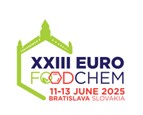Scientific journal
Journal of Food and Nutrition Research
Summary No. 1 / 2022
Catak, J. – Yaman, M. – Ugur, H. – Yildirim Servi, E. – Mizrak, Ö. F.
Investigation of the advanced glycation end products precursors in dried fruits and nuts by HPLC using pre-column derivatization
Journal of Food and Nutrition Research, 61, 2022, No. 1, s. 81-88
Jale Catak, Department of Nutrition and Dietetics, Faculty of Health Sciences, Istanbul Sabahattin Zaim University, Halkali Central Campus, Halkali, Kücükcekmece, 34303 Istanbul, Turkey. E-mail: jalecatak@gmail.com
Received 17 September 2021; 1st revised 16 January 2022; accepted 20 January 2022; published online 26 February 2022.
Summary: Nuts and dried fruits are among the most popular foods consumed worldwide due to their many beneficial effects on health. Many harmful products, such as 1,2-dicarbonyl compounds, glyoxal (GO) or methylglyoxal (MGO), can be formed during thermal processing and long-term storage as precursors of advanced glycation end products (AGE) in foods. This study aimed to determine GO and MGO in nuts and dried fruits. In this study, 38 different raw and roasted nuts and 17 different dried fruits were purchased from various markets in Istanbul, Turkey. The contents of GO and MGO in these foods were determined by HPLC using 4-nitro-1,2-phenylenediamine as a pre-column derivatizing reagent. The determined contents of GO and MGO in the nuts ranged from 0.02 mg·kg-1 to 8.77 mg·kg-1 and from 0.04 mg·kg-1 to
Keywords: dried fruit; nut; glyoxal; methylglyoxal; advanced glycation end product; Maillard reaction
Download:
(pdf, 320.58 Kb, 2277x)










